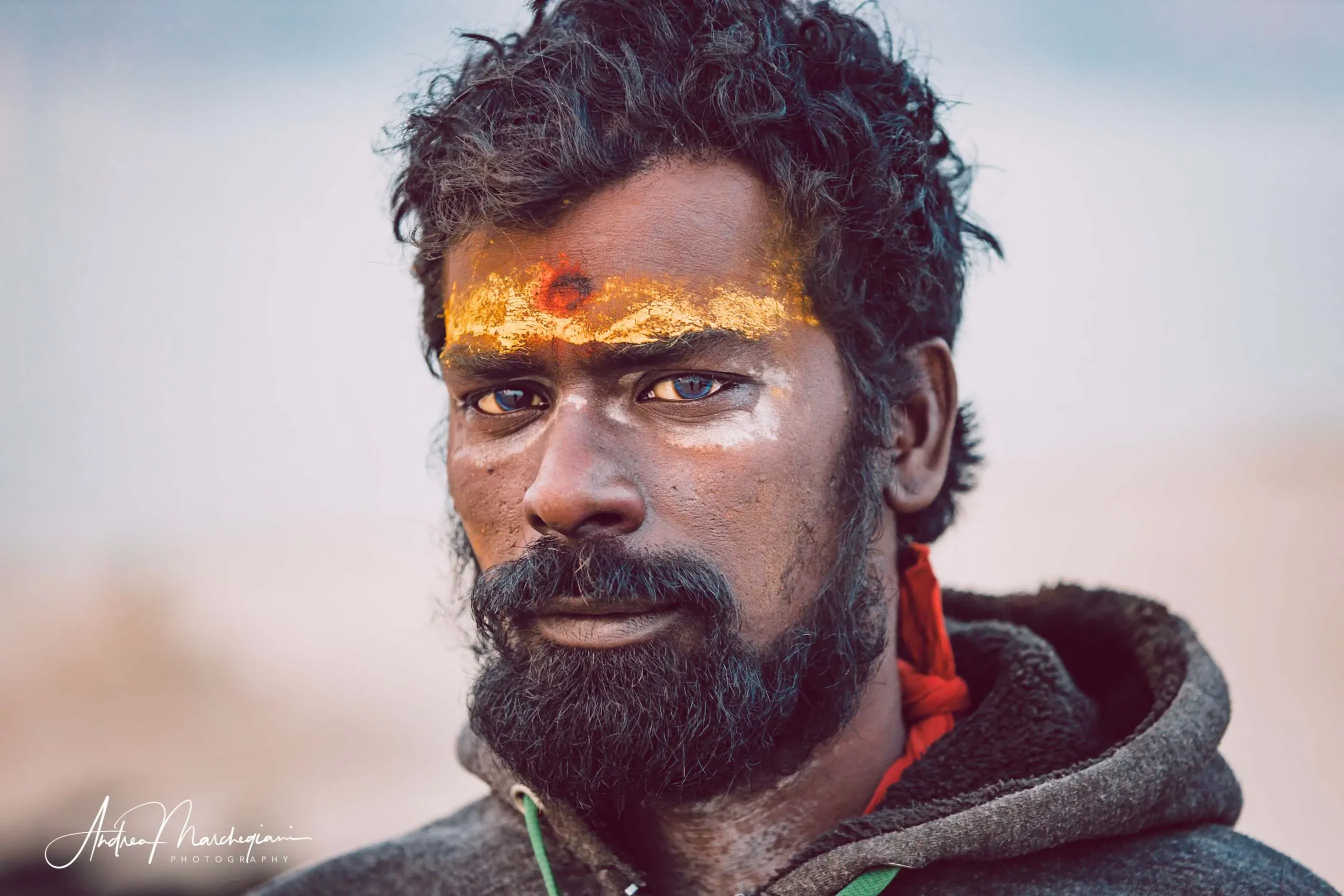
- Home
- Photo Galleries
- Portrait Photography
- Landscape Photography
- Street Photography
- China
- Ethiopia
- India
- Holy Ganges
- Varanasi
- Varanasi Ganga Aarti
- Varanasi, Manikarnika Ghat
- Varanasi Streets & Alleys
- Varanasi Demolition
- Varanasi Fruit Market
- Sarnath
- Brick Kilns
- Tamil Nadu, Chennai & Mamallapuram
- Tamil Nadu, Fort Tirumayam & Madurai
- Tamil Nadu, Tiruvannamalai & Thanjavur
- Kerala, Munnar
- Kerala, Peryiar
- Kerala, Backwaters
- Kerala, Kochi
- Kazakhstan
- Myanmar
- Senegal
- Uzbekistan
- Travel Blog
- China
- Ethiopia
- India
- Tamil Nadu & Kerala
- Varanasi
- Whato to do in Varanasi
- Varanasi Life along the Ghats
- Varanasi Death along the Ghats
- Varanasi Ganga Aarti Ceremony
- Varanasi demolished to honor Shiva
- Varanasi Fruit Market
- “Varanasi, A Journey into the Infinite”
- Sarnath
- All about River Ganges
- Holy Shit. All about Indian Cow Dung
- Clean India Project
- Brick factories
- Tilaka, pundra, bindi: what is the mark on Indian foreheads?
- Kazakhstan
- Mongolia
- Ulaanbaatar, the coldest capital in the world
- What to do in Ulaanbaatar
- Chinggis Khan Museum, 6 floors of Mongolian history
- Gorkhi-Terelj National Park and Bodgkhan Natural Reserve
- Altai Mountains, Things to do in Olgii and Sagsai
- Living with the Eagle Hunters
- Sagsai Eagle Festival
- Navrus Festival
- Xöömej, Mongolian throat singing
- Mongolian Food
- Myanmar
- Senegal
- Uzbekistan
- Latest Posts
- Photography Blog
- About
- Prints
Did you know that Indian traditional medicine is curing coronavirus by bathing in cow’s feces and drinking urine? I must say that I am not at all surprised. Just a few months ago, during a trip to India, I was offered bread baked in dung. Dried cow dung is also used for heating and cooking. After all, it’s a natural and ecological energy source!
Share with your friends:
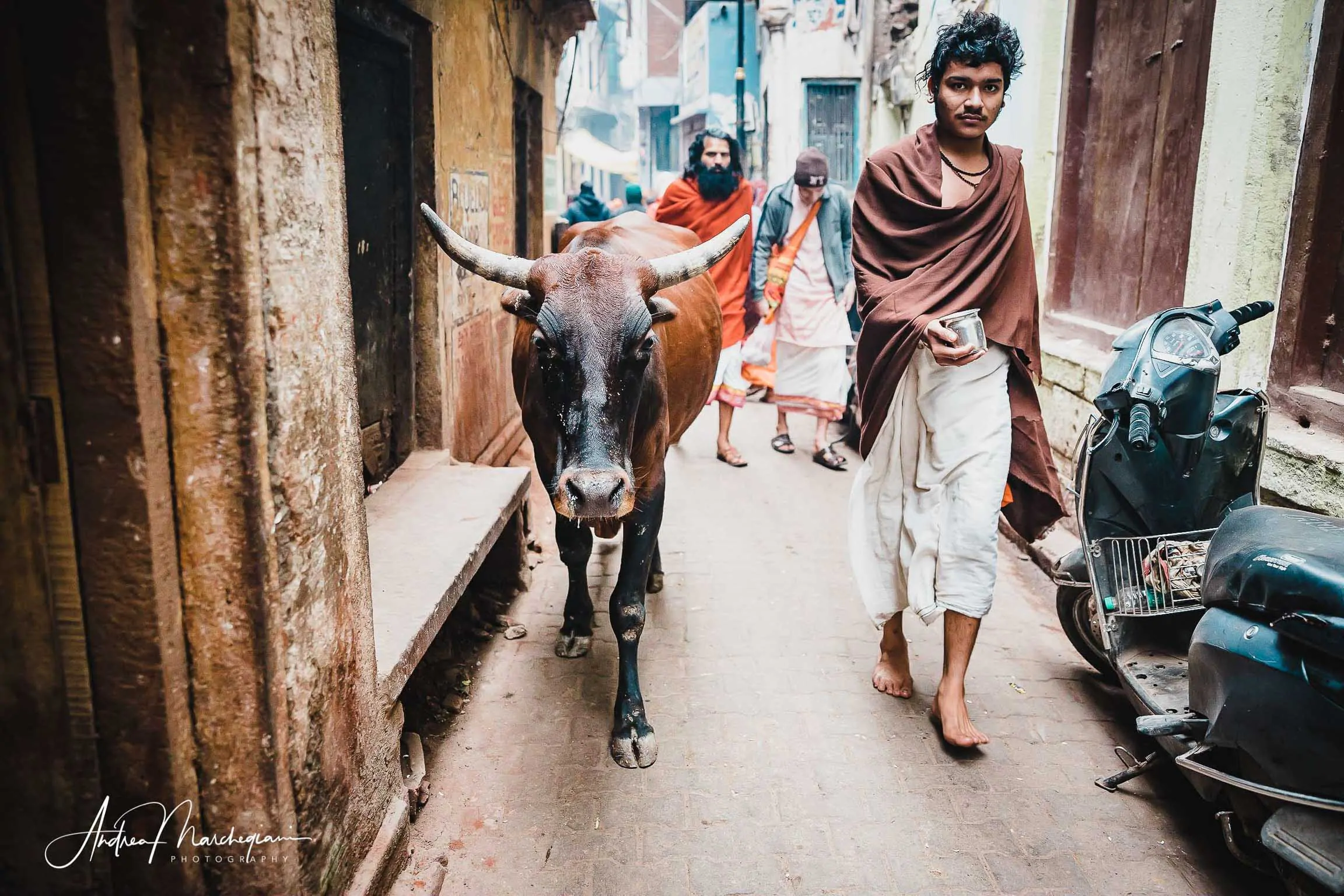
Indian cows are holy
When I returned from India, I found myself searching for cows and calves on every street corner. In fact, it is very common there to come across cows that walk or lie down wherever they like.
Indian cows, with their benevolent and reassuring presence, have produced in me a sort of soul addiction, filling my affective gaps and making the pains of life more bearable.
The Indians consider cows holy animals because of their generosity: they give their milk to all, nourishing not only their own offspring, but that of the entire planet. In this perspective, the absence of cows in Western daily life is a crime against their spiritual lives.
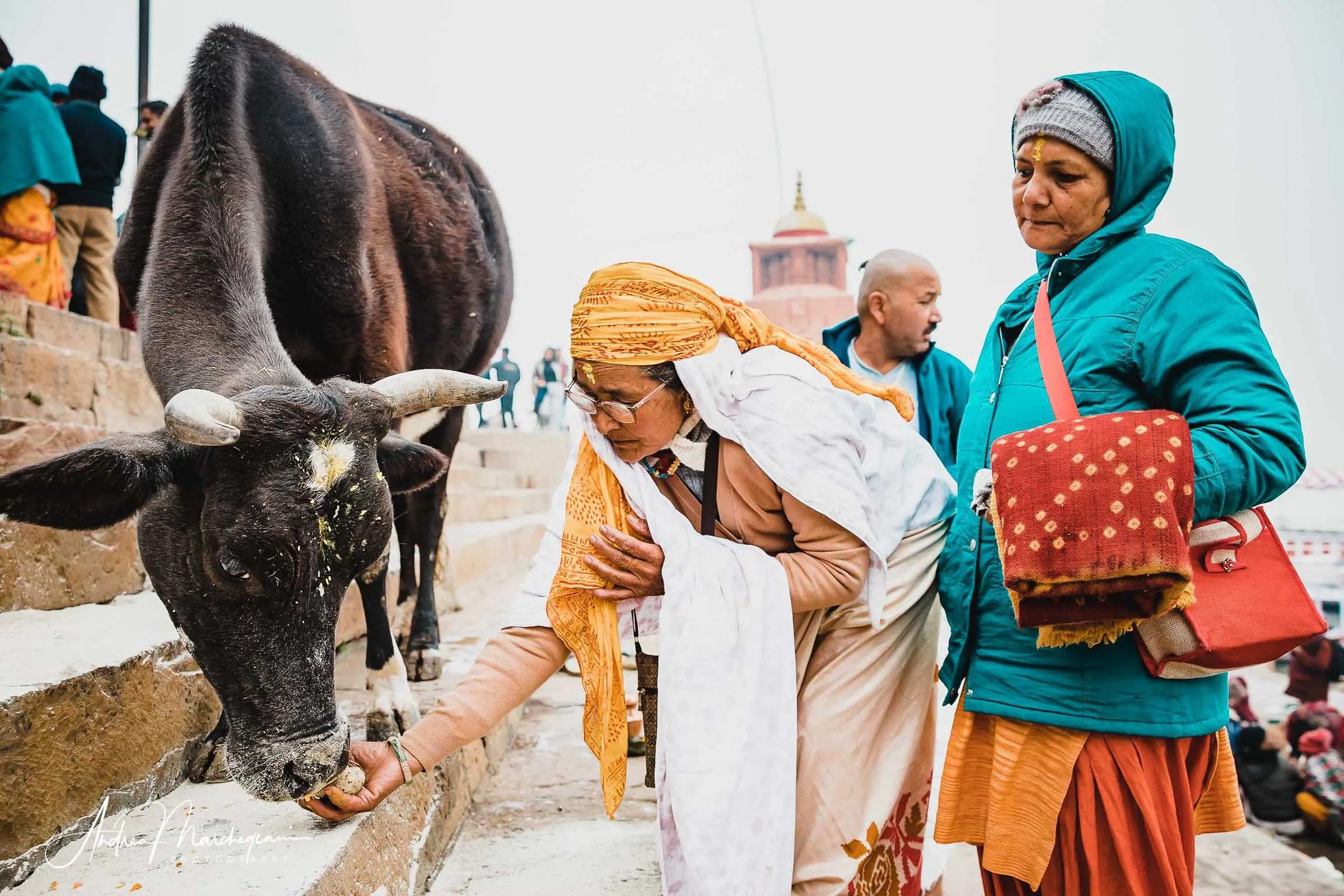
Cow Dung cakes will warm you up
So it’s no wonder that Indians value everything that comes from the cow, even their feces. The first time I notice it I am in Varanasi.
Every morning I watch the Dalits, the untouchables, clean the streets of the dung and store it in tin carts. Walking through the alleys, I happen to see the same dung molded into discs of various sizes and put to dry in the sun. In the evening, during the majestic ceremony of the Ganga Aarti, I observe the dried dung cakes used as fuel to light the fire of the sacred lanterns.
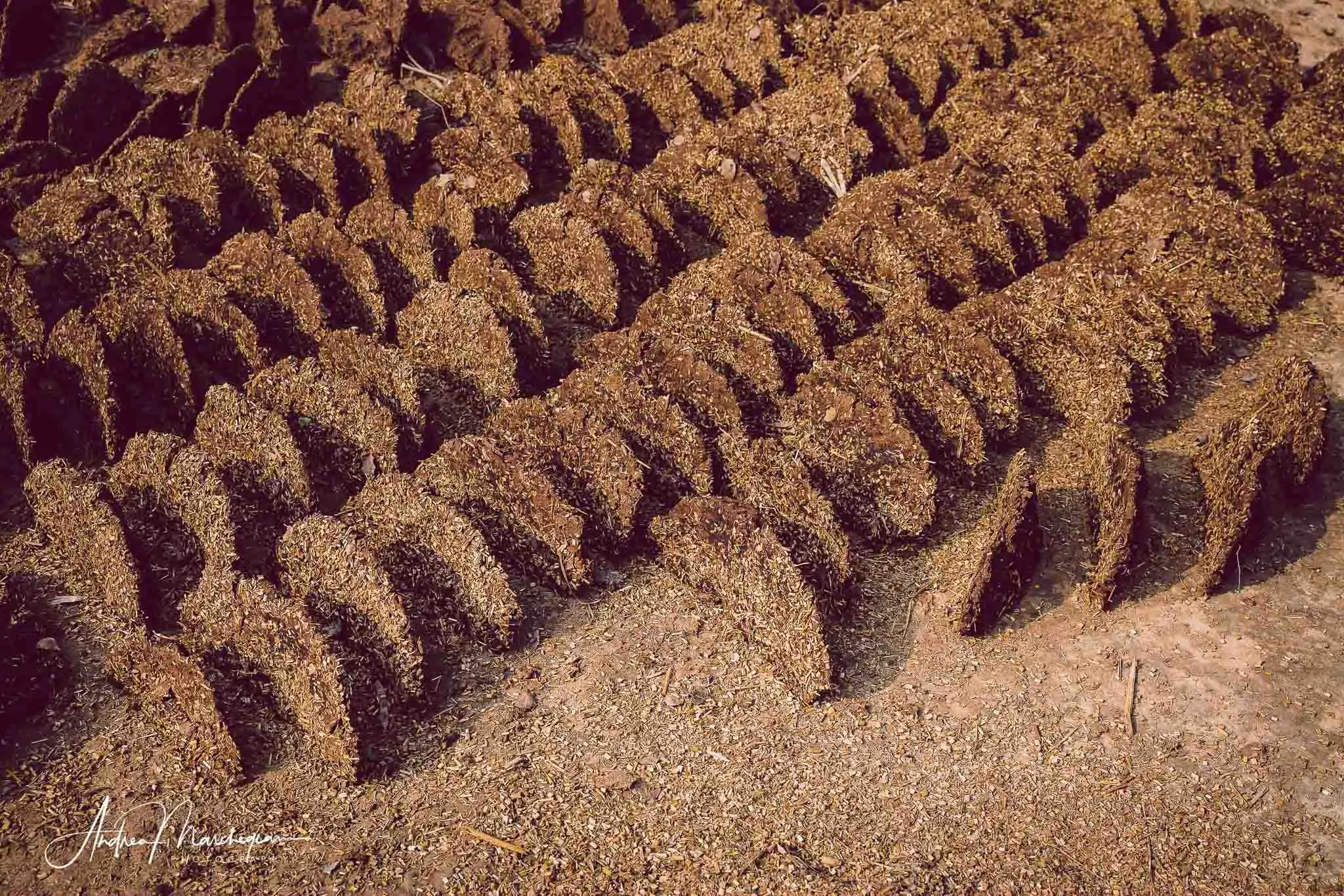
Dried cow dung is a widely used system for heating and cooking. Harvesting and drying it are mostly jobs for women. This activity is such deeply rooted in rural traditions, people are having a hard time to consider alternative heating systems.
In India the past doesn’t melt into the present; on the contrary, it strongly conditions it. In recent years, a thriving online poop loaf trade has been born on Amazon and Ebay. The request for dung comes from the citizens of the metropolis who want to use the dung cakes made in the countryside.
This link with tradition is also a blessing for the entire planet: if all Indians used coal to warm up, the effects on the environment would be devastating. The politicians of the country know this well, that is why they are relying on solar energy.
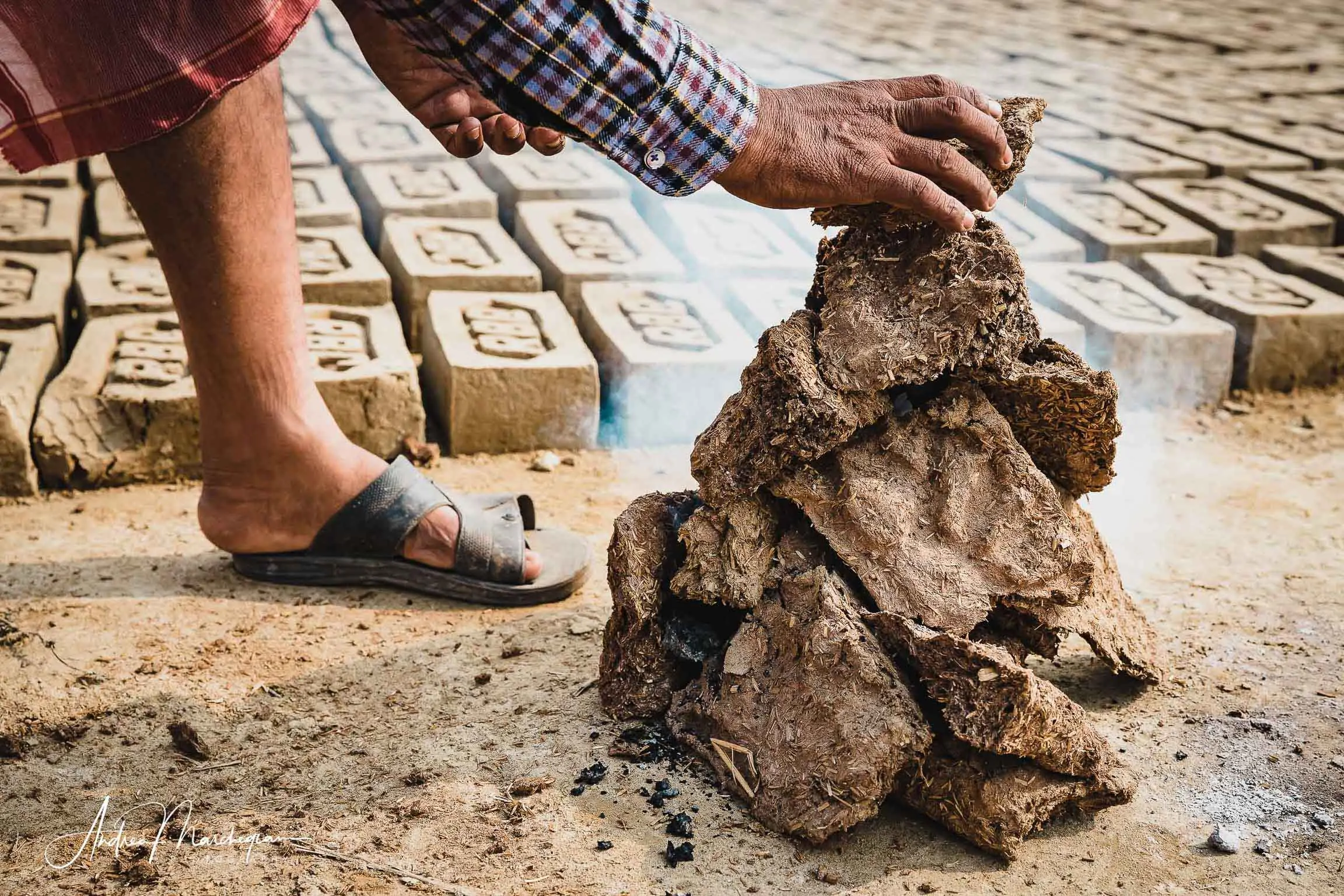
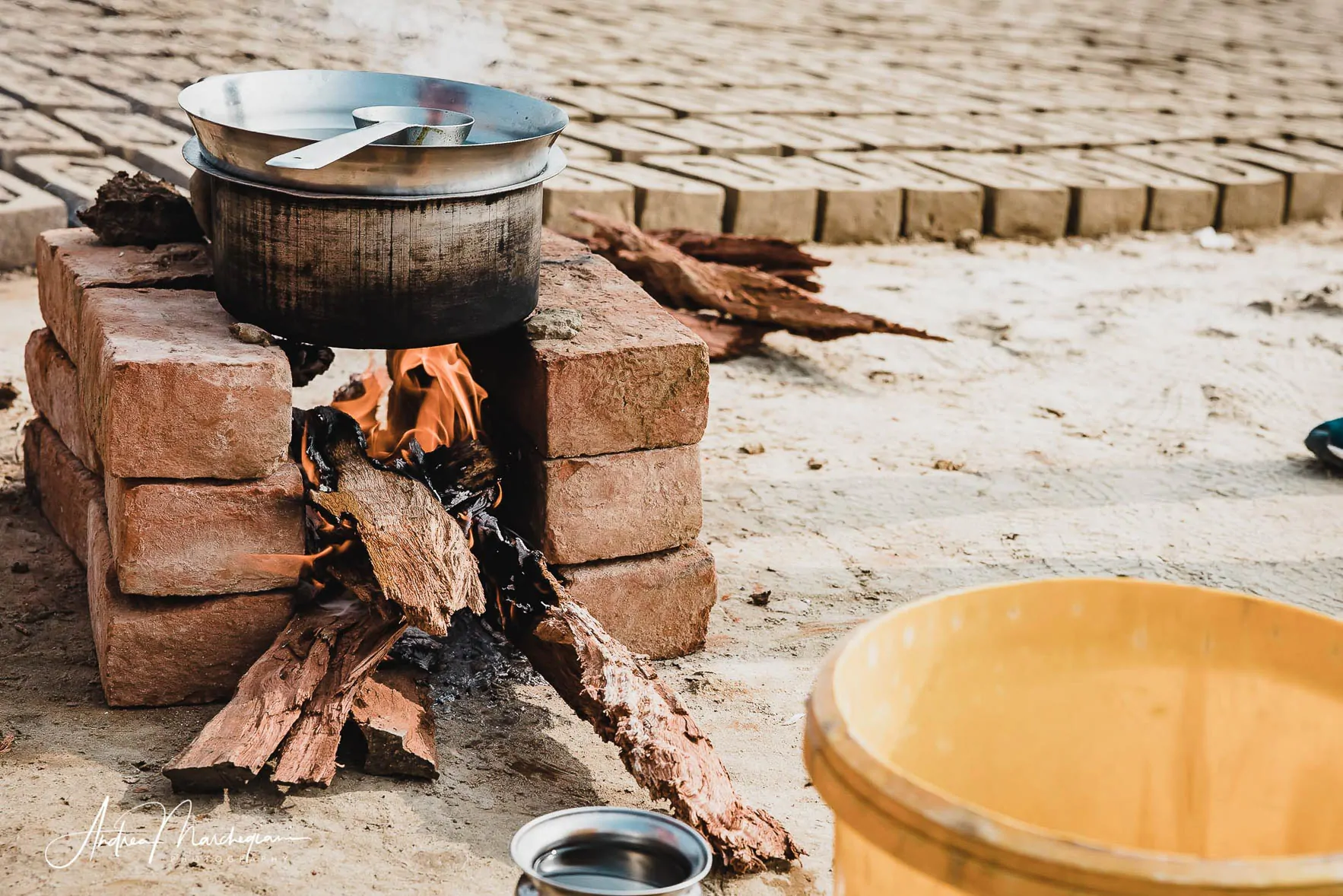
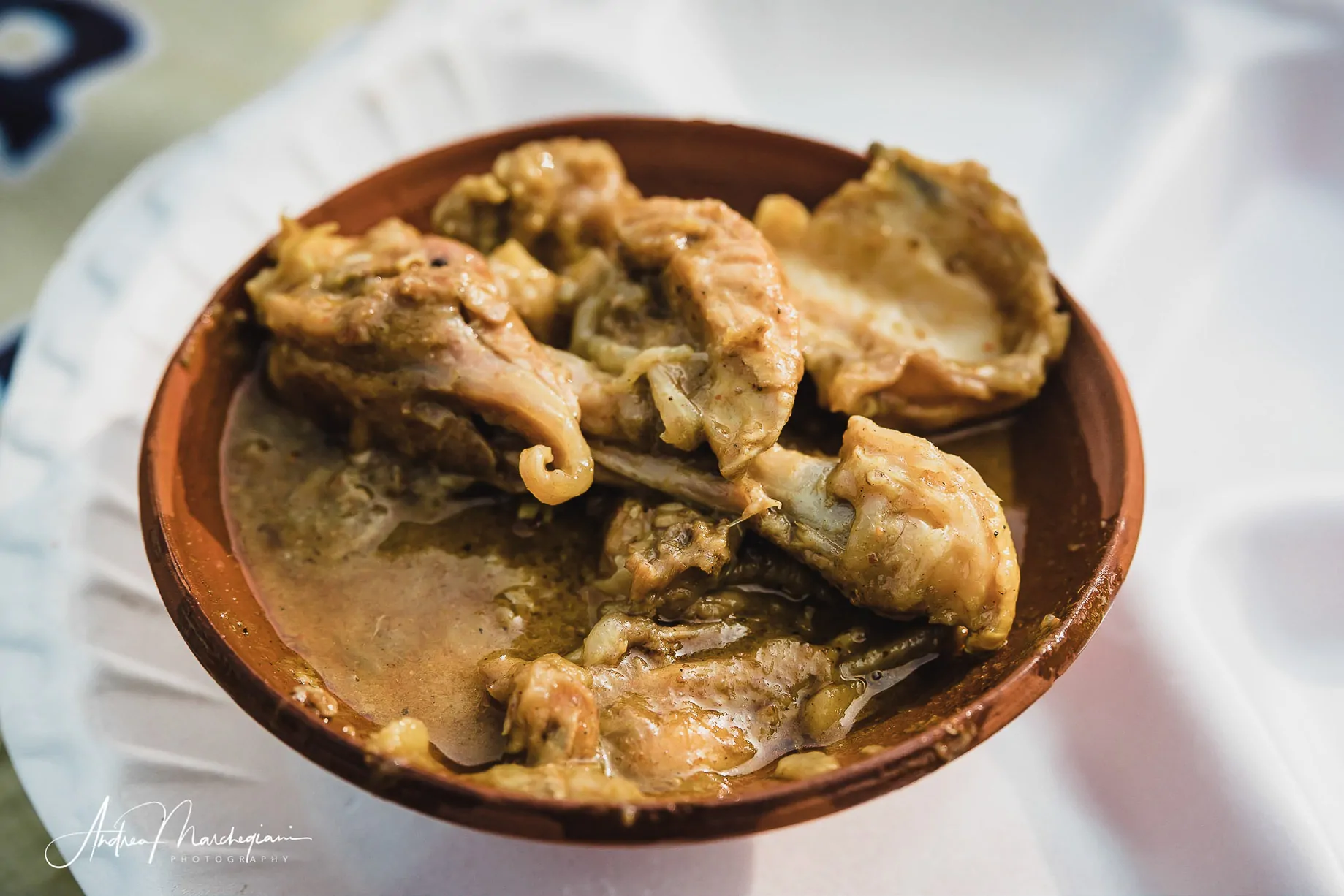
Cow dung cake to cook food
I immediately feel sympathy for this ecological energy source, but never thought I would eat it!
After a couple of days in Varanasi, I take advantage of a sunny day to visit Chaubepur, a few kilometers away. Here is a traditional Indian brick factory that I’m dying to photograph.
At the end of the visit, Prakash, the guide who got in touch with the factory, decided to surprise me: he cooked me a picnic!
“Andrea, you have to try my chicken curry,” he says. We sit on a plastic sheet that he has laid out in a dirt road in front of the factory and he starts preparing the meal. “I didn’t bring the cutlery. We’ll eat with our hands, as we Indians do!”
He lights up the cow dung cakes and puts a stove on them. “I’ll even let you taste our traditional bread”, he adds. “It is cooked directly in the fire”. He kneads some wheat rolls and puts them to cook directly into cow dung cakes. As the hot weather confuses my senses, I realize I’m about to eat bread and poop.
Prakash offers me a can of hot beer, which I swill to cloud my mind!
I would rather cut off my hand than refuse the invitation, so I find myself eating an exceptional chicken curry, surrounded by thousands of flies feasting between my fingers, on my face, attaching to my socks and obviously walking inside my plate. Prakash is so happy to be able to show me his cooking skills that I eat everything. Even sandwiches cooked in cow dung.
Do I like them? I wouldn’t feel like saying it, but they feed more than a billion people so I respect them! Before each bite, I remove the embers from the crust and convince myself that it can not hurt me: I am protected by the benevolence of Indian cows.
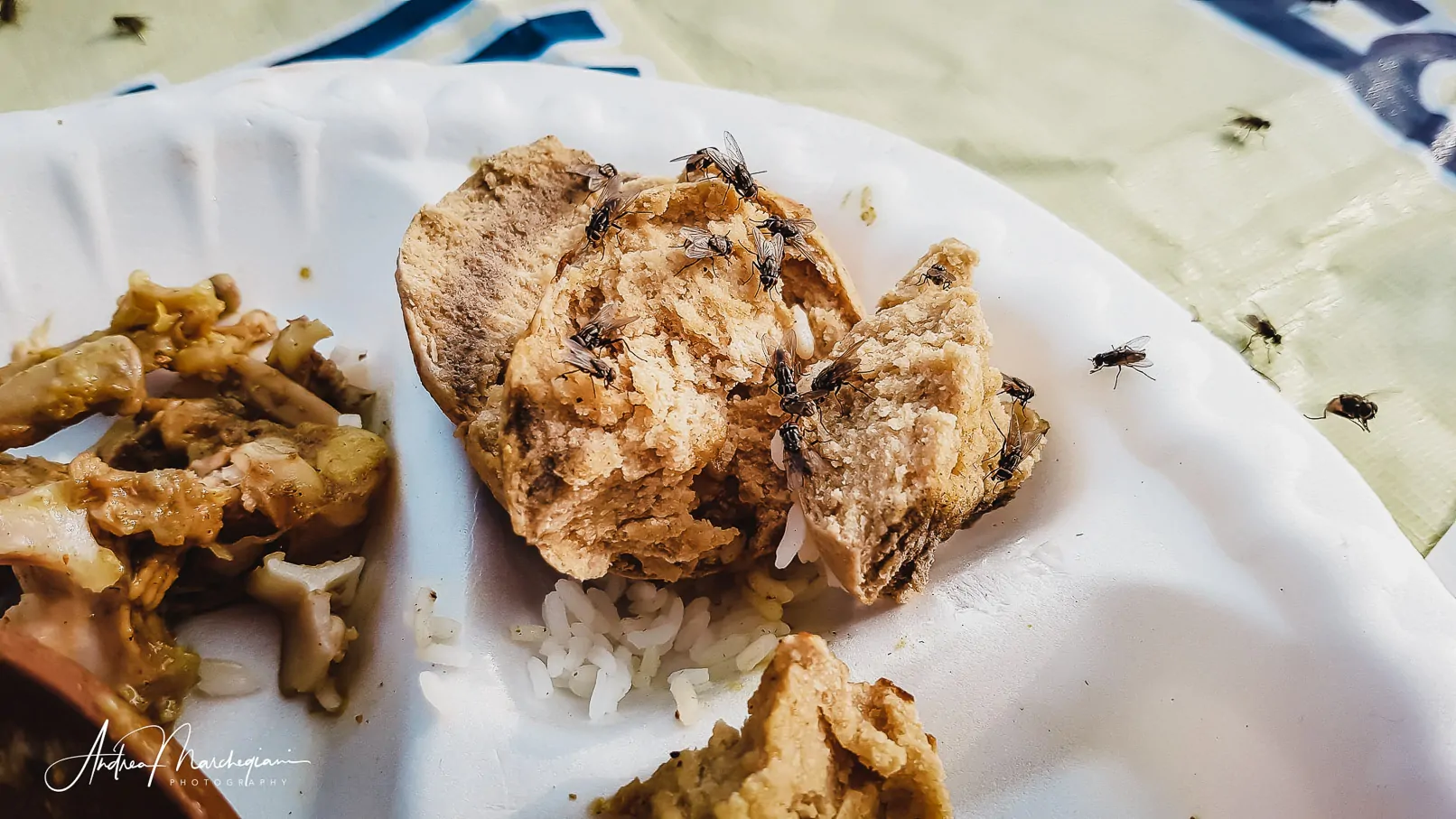
Cow dung baths will heal you
I was so intrigued by the experience that I did some research when I got back home. So I discover that cow dung is not only used as a fuel but also to model art objects, pottery and furnishings.
With an unexpected deviation I then discover it has also medical implications.
Indian tradition considers cow dung as a powerful stimulant of the immune system, so it is advisable to dive into poop tanks to strengthen the body.
There is even a dung festival called Gorehabba where people splah themselves with crappy water balloons in a hilarious war.
Finally, cow urine is considered a long life elixir and people drink to prevent basically any illness.
During the quarantine due to covid-19, the combination of dung baths and urine drinking is considered by many a safe remedy against the virus. Watching the videos on youtube about these practices, my sandwich baked in burning dung looks like a healthy food.
Placed in this intermediate dimension between realism and magic, India never ceases to amaze me. It is impossible not to be enchanted by it. Those who have visited it know that it is not an intercontinental but an inter-dimensional journey.
Share with your friends:
More from India Travel Blog
To be honest people all around the world have no problem eating the anus, testicles, penis, rectum, urinal bladder of sheep, goats, chicken, pigs, cows, dogs, fish etc. Some cultures drink camel urine. Many drink coffee made from civet poop. So it’s fair to respect everyone’s sarcasm and hypocrisy.
Leave A Reply Cancel reply
This site uses Akismet to reduce spam. Learn how your comment data is processed.

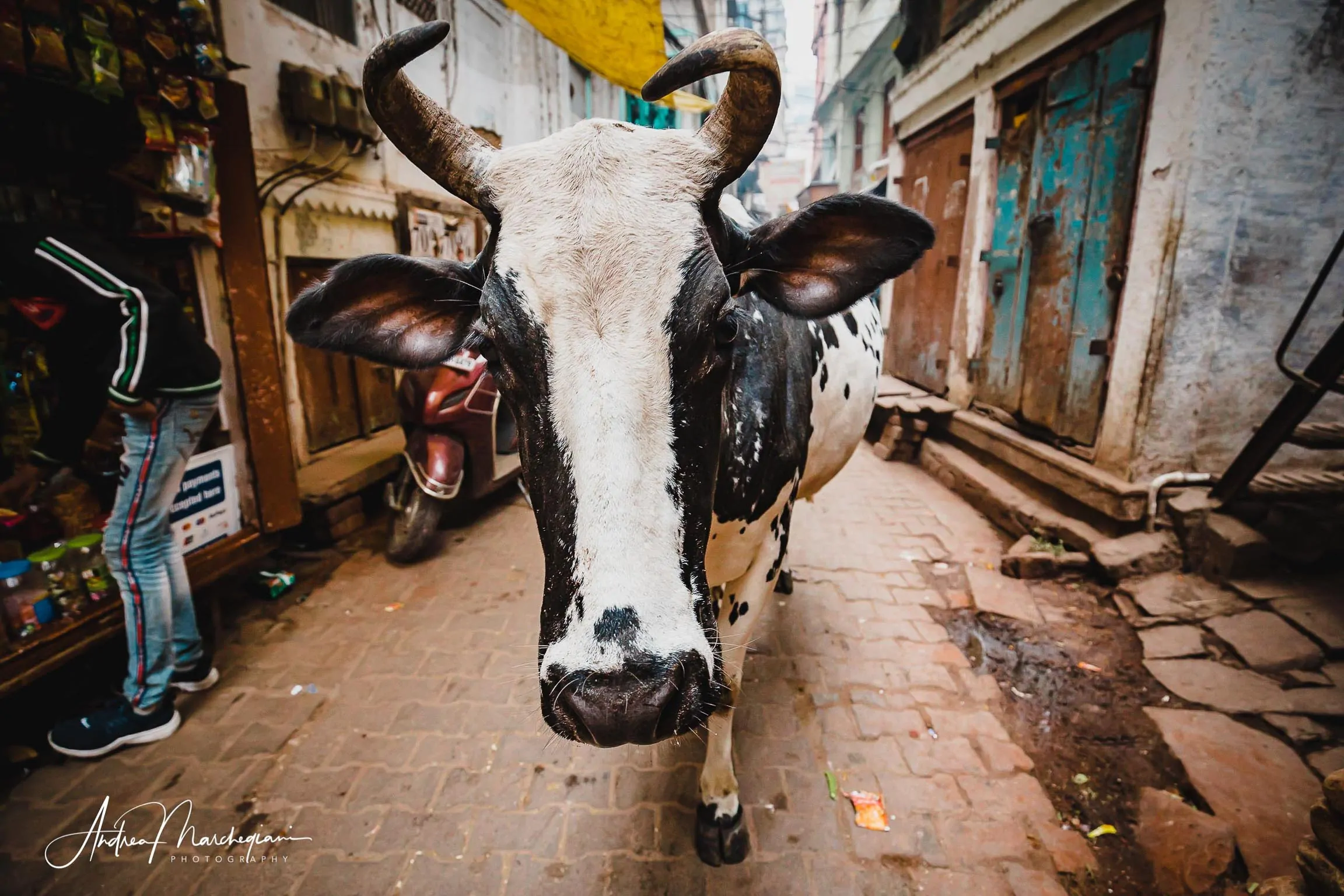


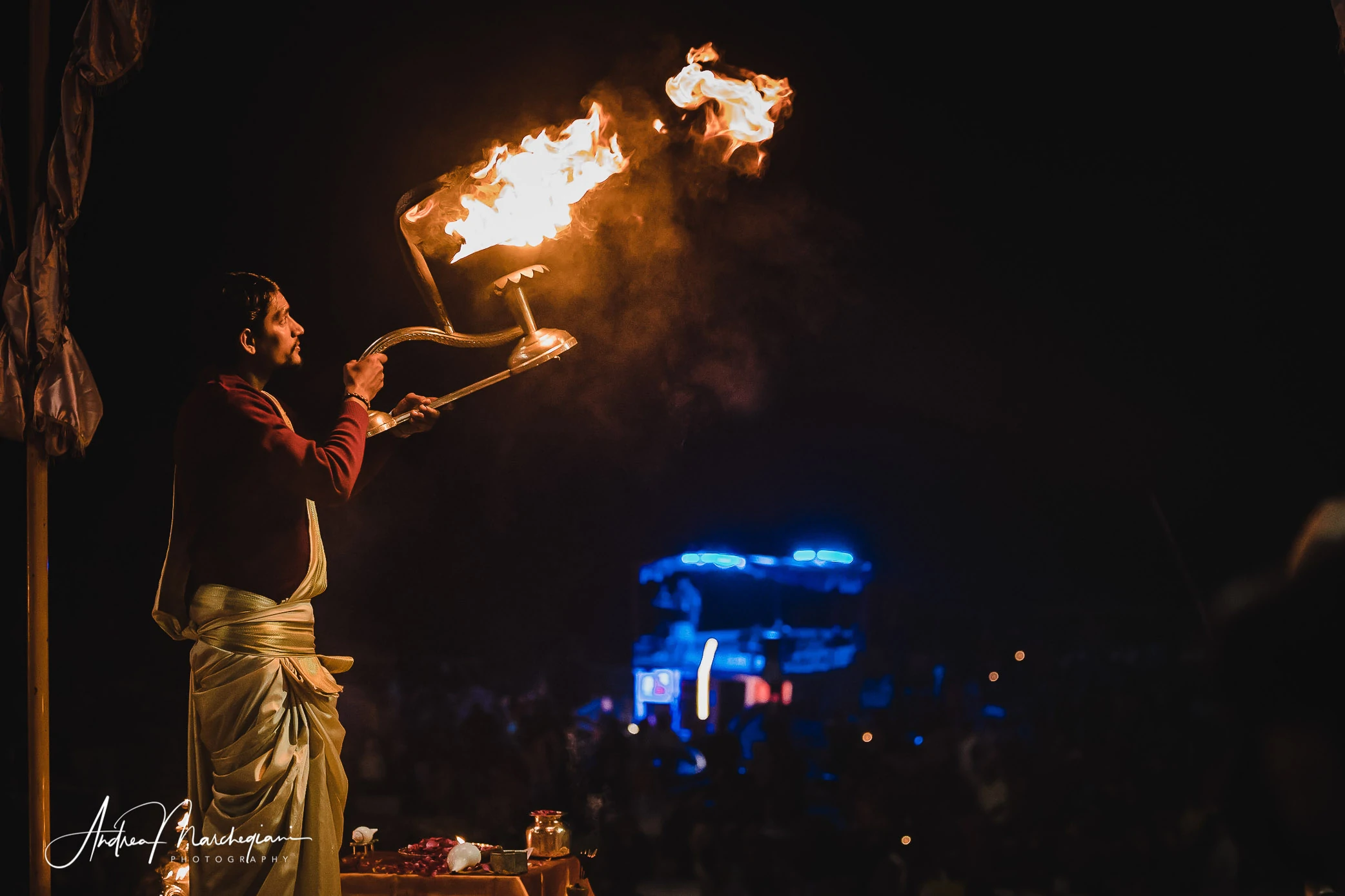
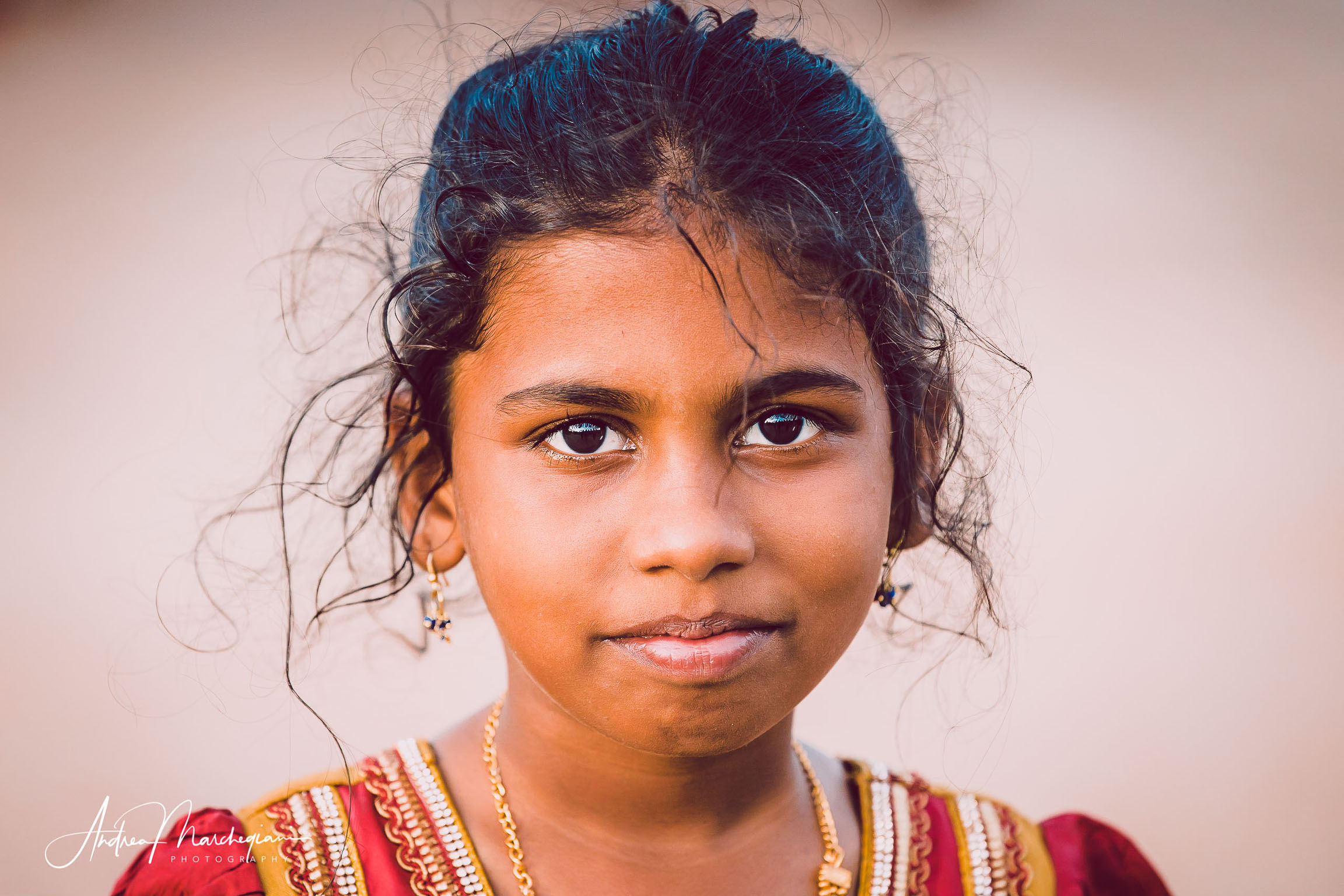
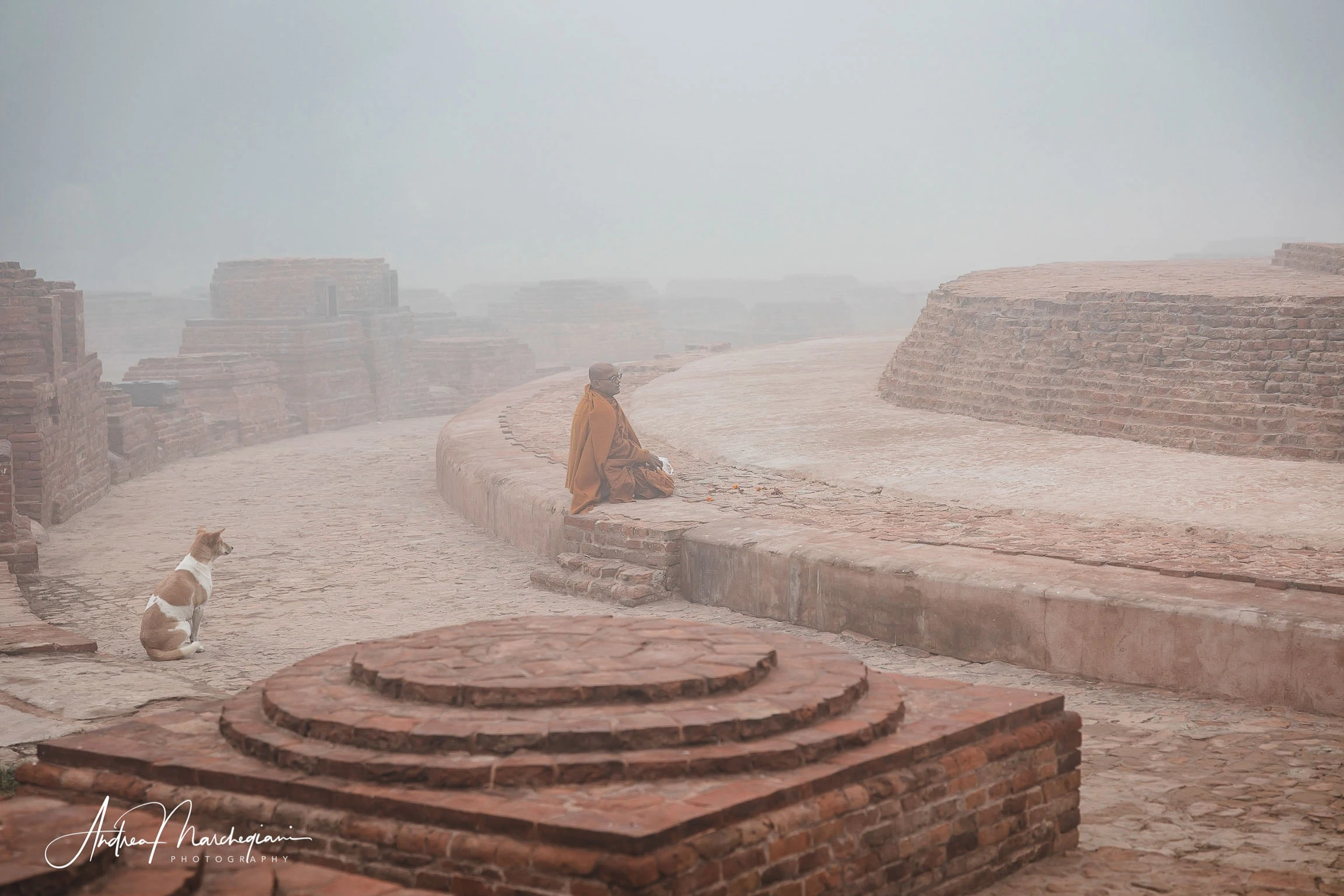
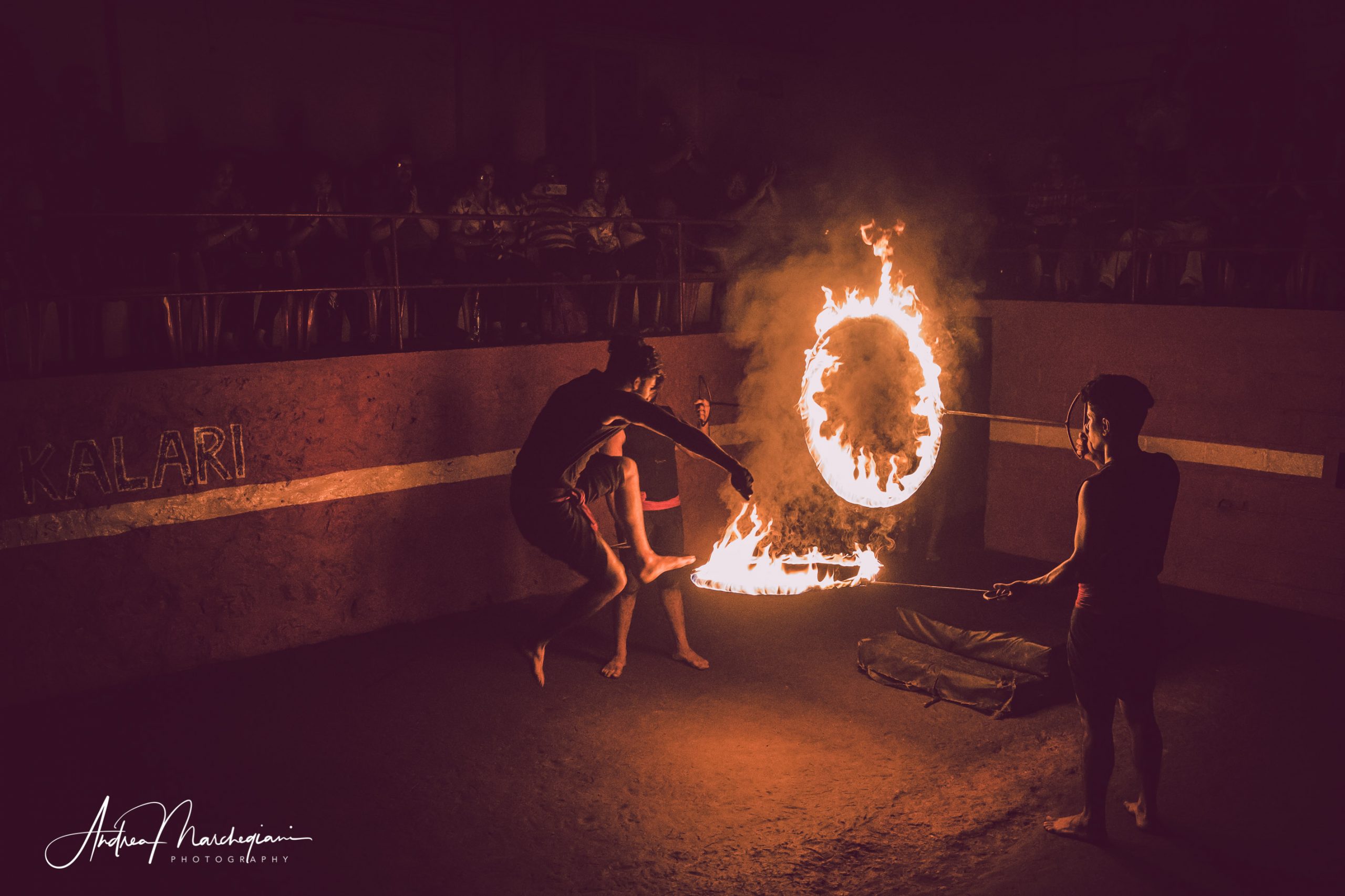
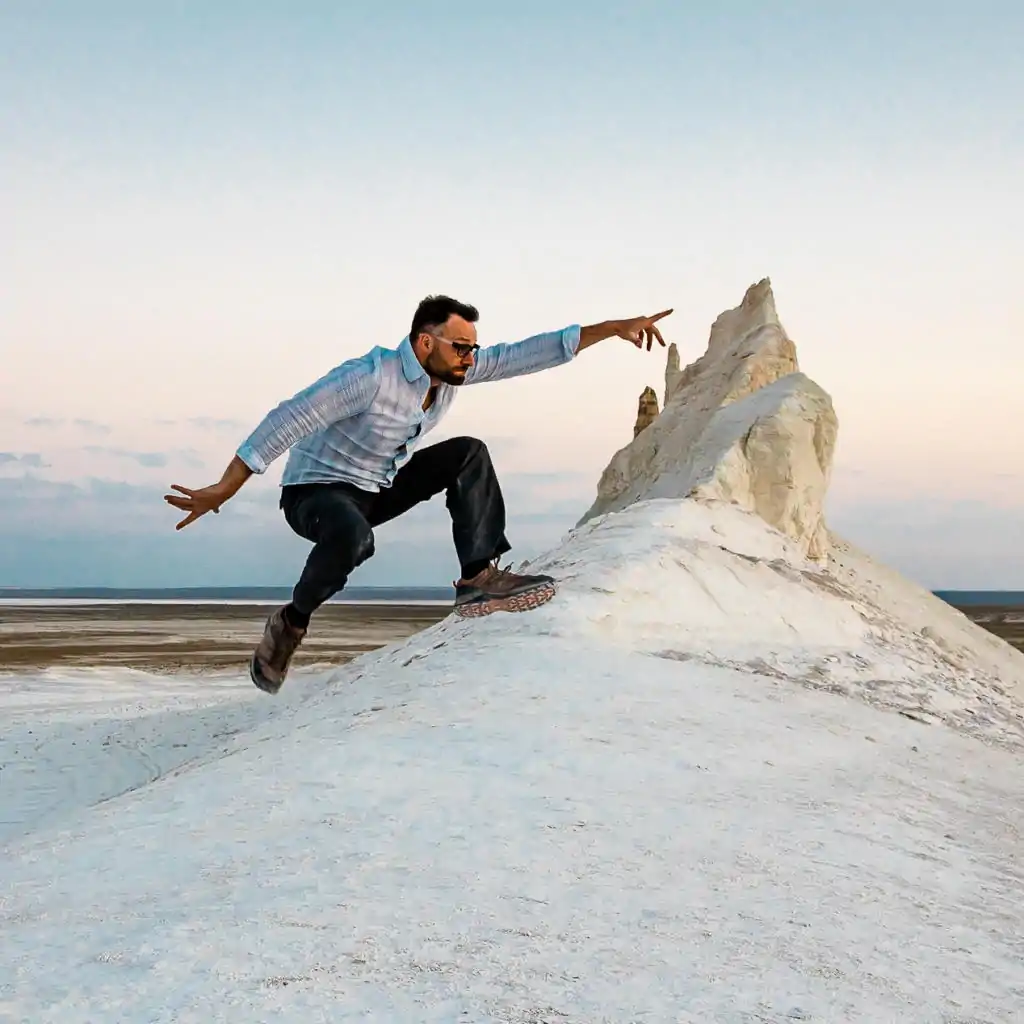

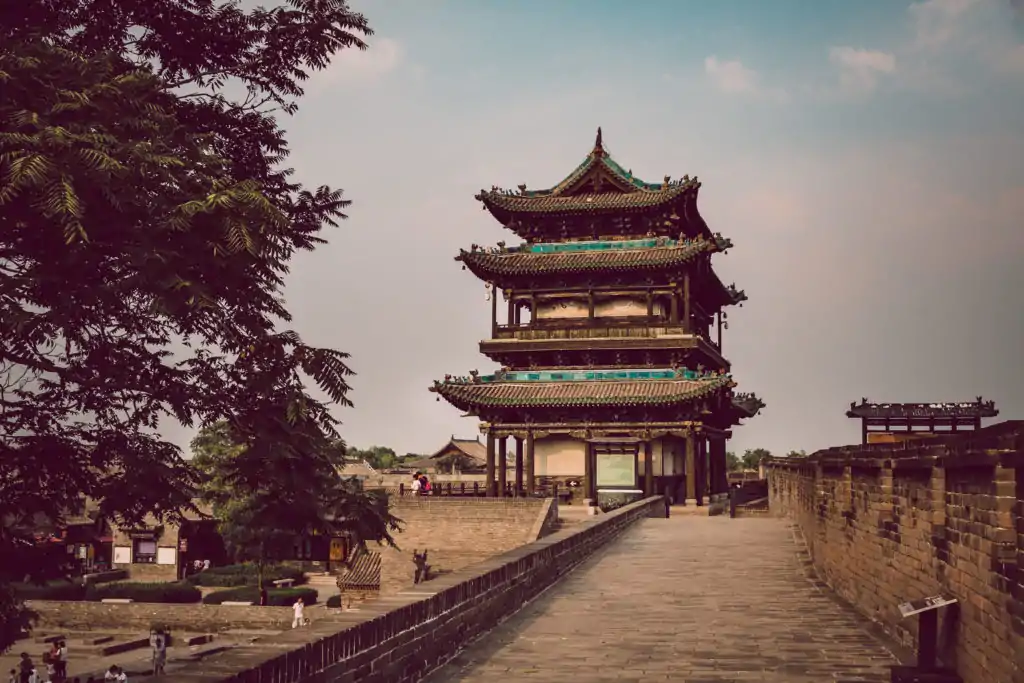
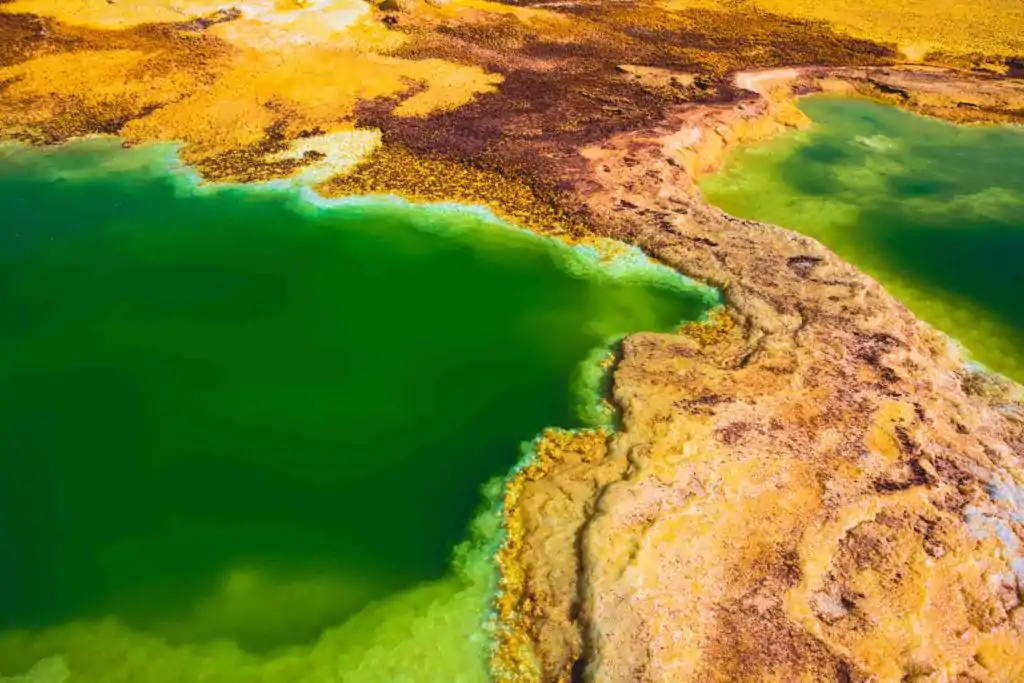
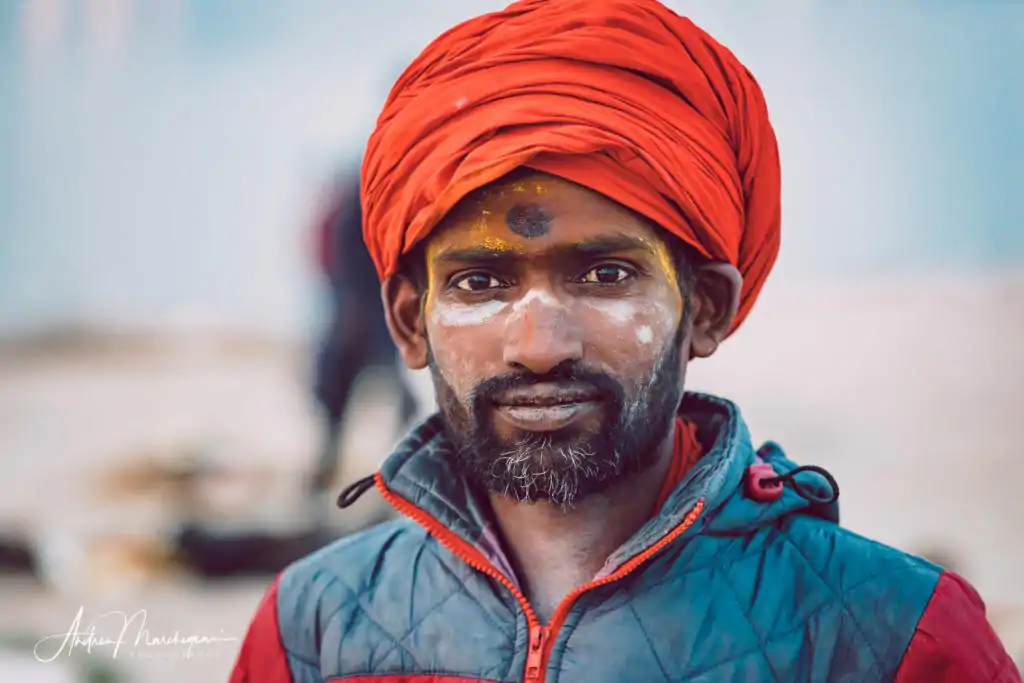
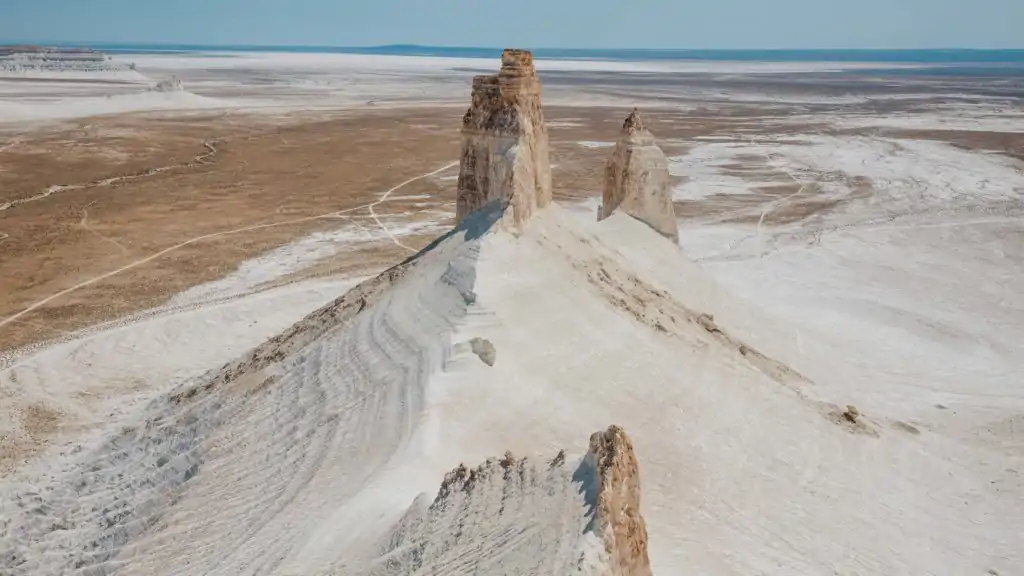
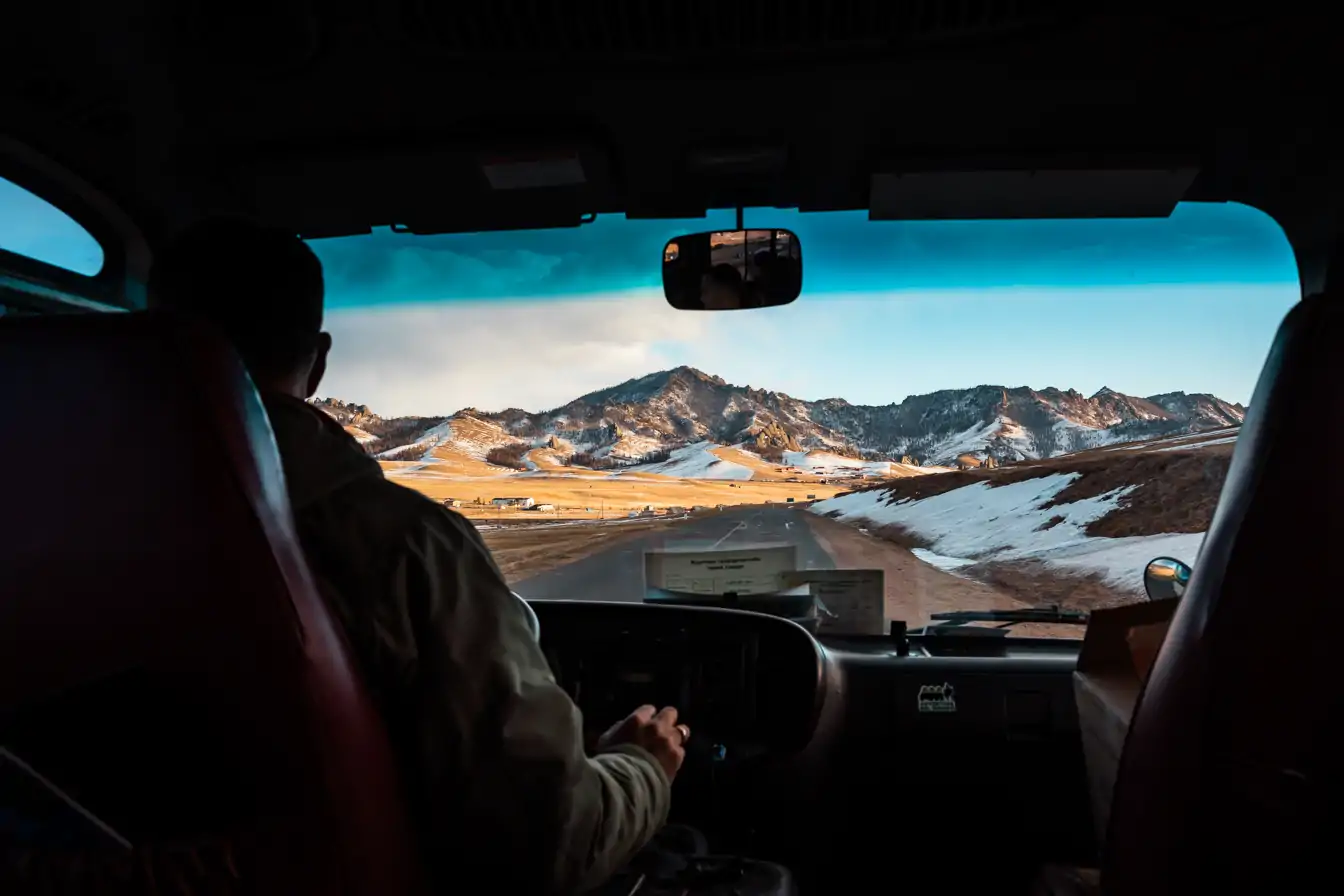
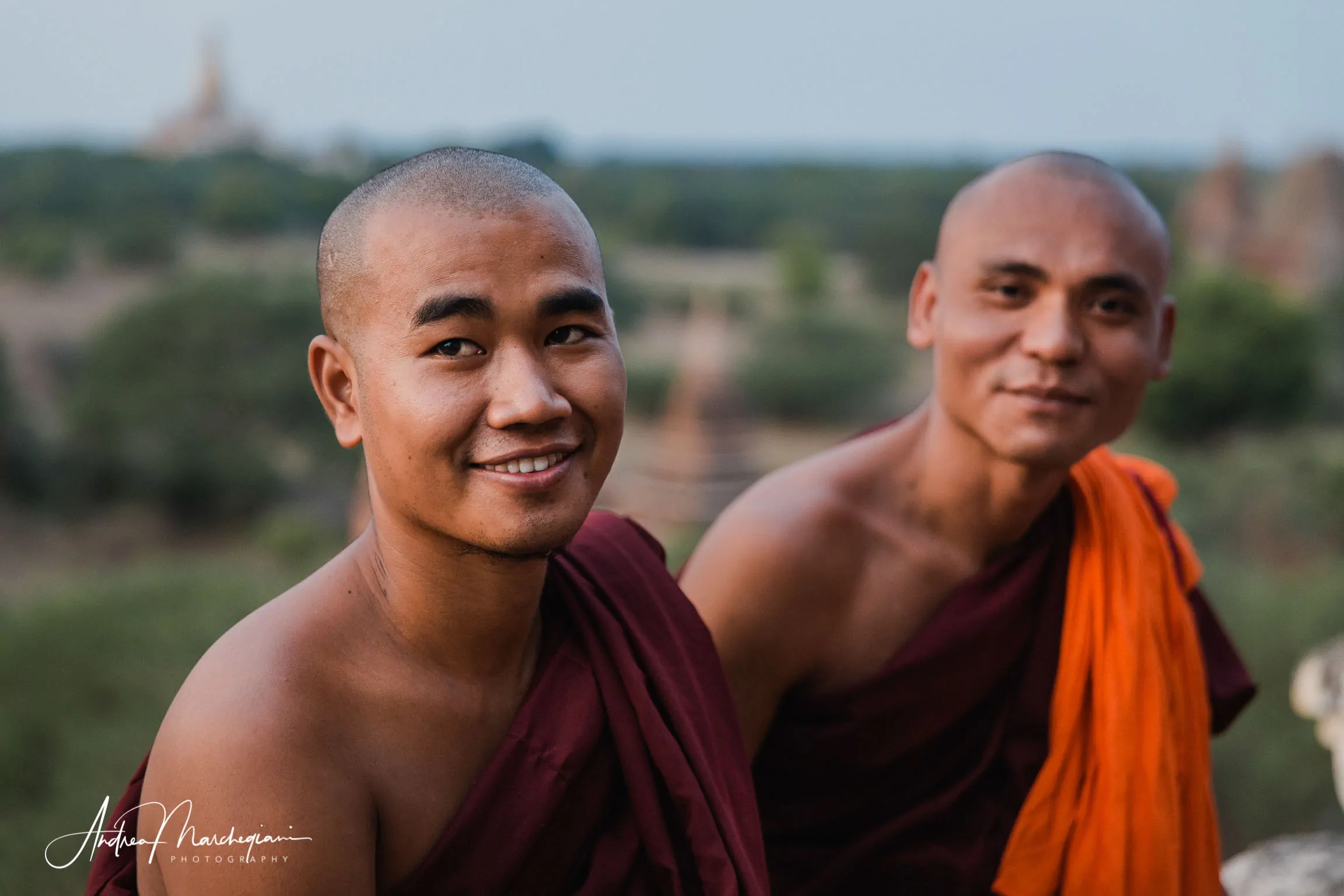



4 Comments
I cannot believe you ate the stuff with flies all over with poop – wow!! Super brave, but also not so very hygienic. Super gross and likely to turn off people from India as it makes it look disgusting.
You literally tricked yourself into eating poop thinking it’s some great cultural thing 😂.
Some cultures are better than others Andrea!